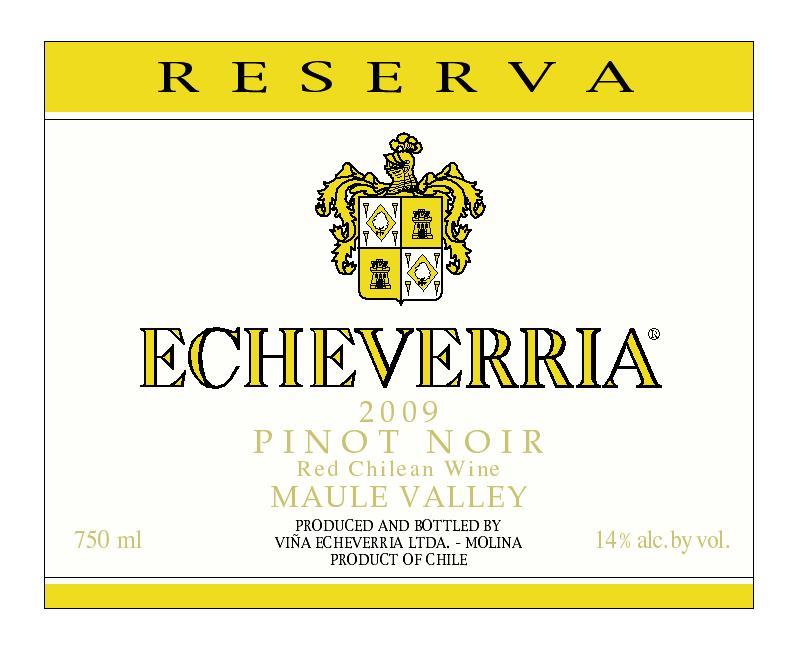2009 Maule Valley Pinot Noir
The Echeverria Reserva Pinot Noir from the 2009 vintage showcases the stunning characteristics of the Maule Valley, a region renowned for its exceptional terroir. This red wine presents a medium body that elegantly carries notes of dark cherry, raspberry, and subtle hints of spice, inviting the palate to explore its depth. The acidity is bright, providing a refreshing lift that balances the wine's fruitiness, while the tannins are soft and integrated, contributing to a smooth mouthfeel without overpowering the delicate fruit flavors. As a well-crafted expression of Pinot Noir, this wine is dry, making it wonderfully versatile for pairing with a variety of dishes or simply enjoying on its own. With its thoughtful craftsmanship, the Echeverria Reserva remains a delightful choice for both casual gatherings and special occasions.
The Echeverria Reserva Pinot Noir from the 2009 vintage showcases the stunning characteristics of the Maule Valley, a region renowned for its exceptional terroir. This red wine presents a medium body that elegantly carries notes of dark cherry, raspberry, and subtle hints of spice, inviting the palate to explore its depth. The acidity is bright, providing a refreshing lift that balances the wine's fruitiness, while the tannins are soft and integrated, contributing to a smooth mouthfeel without overpowering the delicate fruit flavors. As a well-crafted expression of Pinot Noir, this wine is dry, making it wonderfully versatile for pairing with a variety of dishes or simply enjoying on its own. With its thoughtful craftsmanship, the Echeverria Reserva remains a delightful choice for both casual gatherings and special occasions.




